
How to Use ESP32: Examples, Pinouts, and Specs
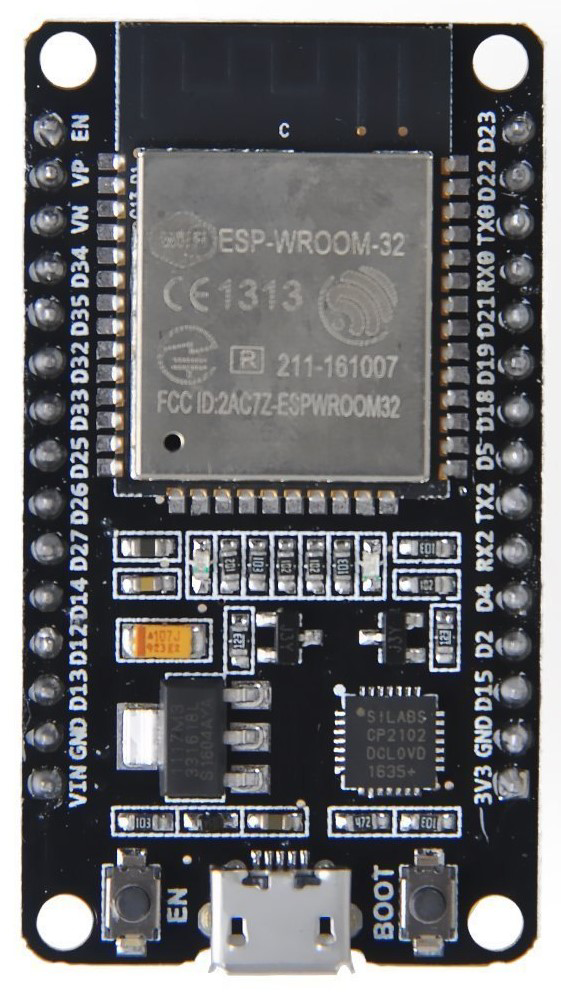
 Design with ESP32 in Cirkit Designer
Design with ESP32 in Cirkit DesignerIntroduction
The ESP32, manufactured by THINGS KIT MINI with the part ID NODEMCU, is a low-cost, low-power system on a chip (SoC) designed for IoT applications. It integrates Wi-Fi and Bluetooth capabilities, making it a versatile and powerful solution for a wide range of projects. The ESP32 is widely used in smart home devices, wearable electronics, industrial automation, and other applications requiring wireless connectivity and efficient processing.
Explore Projects Built with ESP32
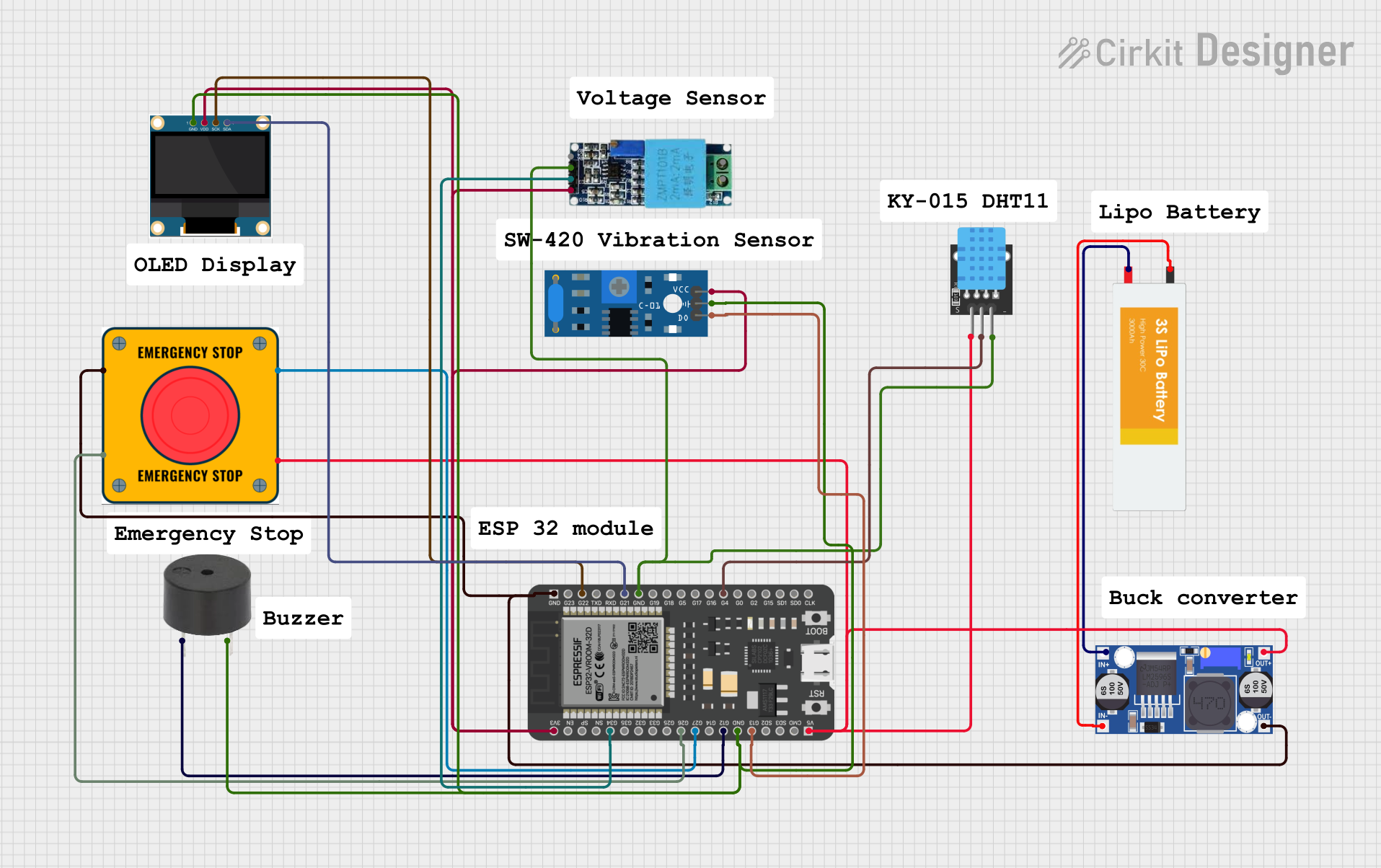
 Open Project in Cirkit Designer
Open Project in Cirkit Designer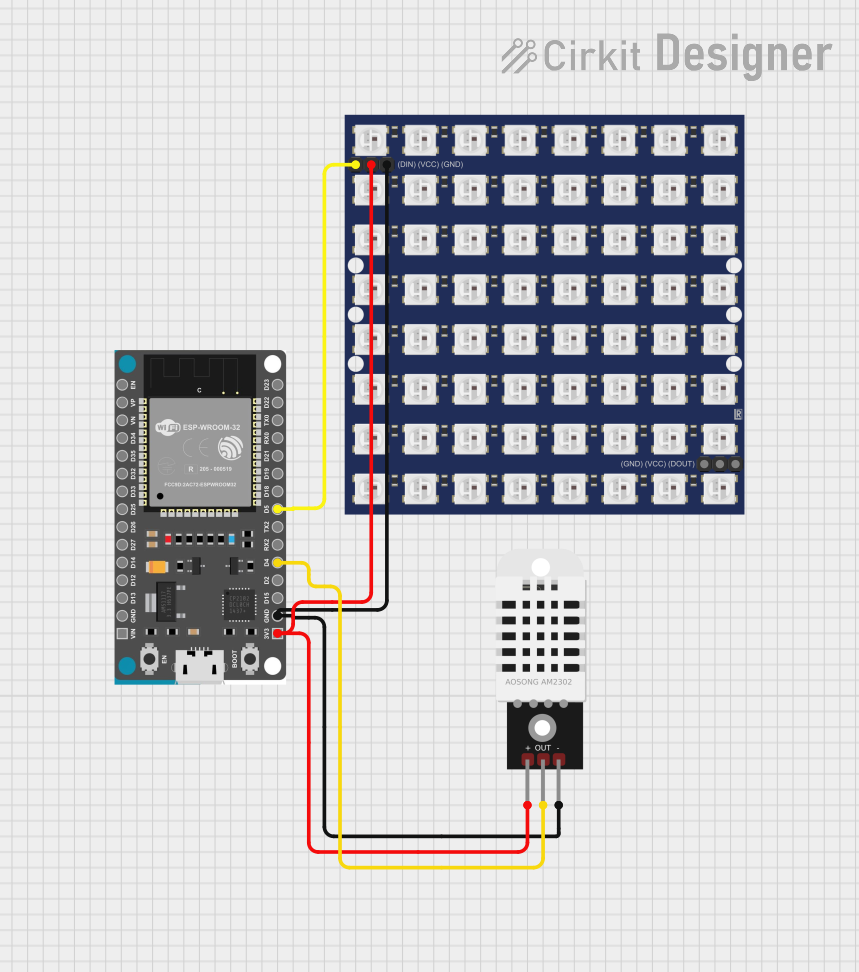
 Open Project in Cirkit Designer
Open Project in Cirkit Designer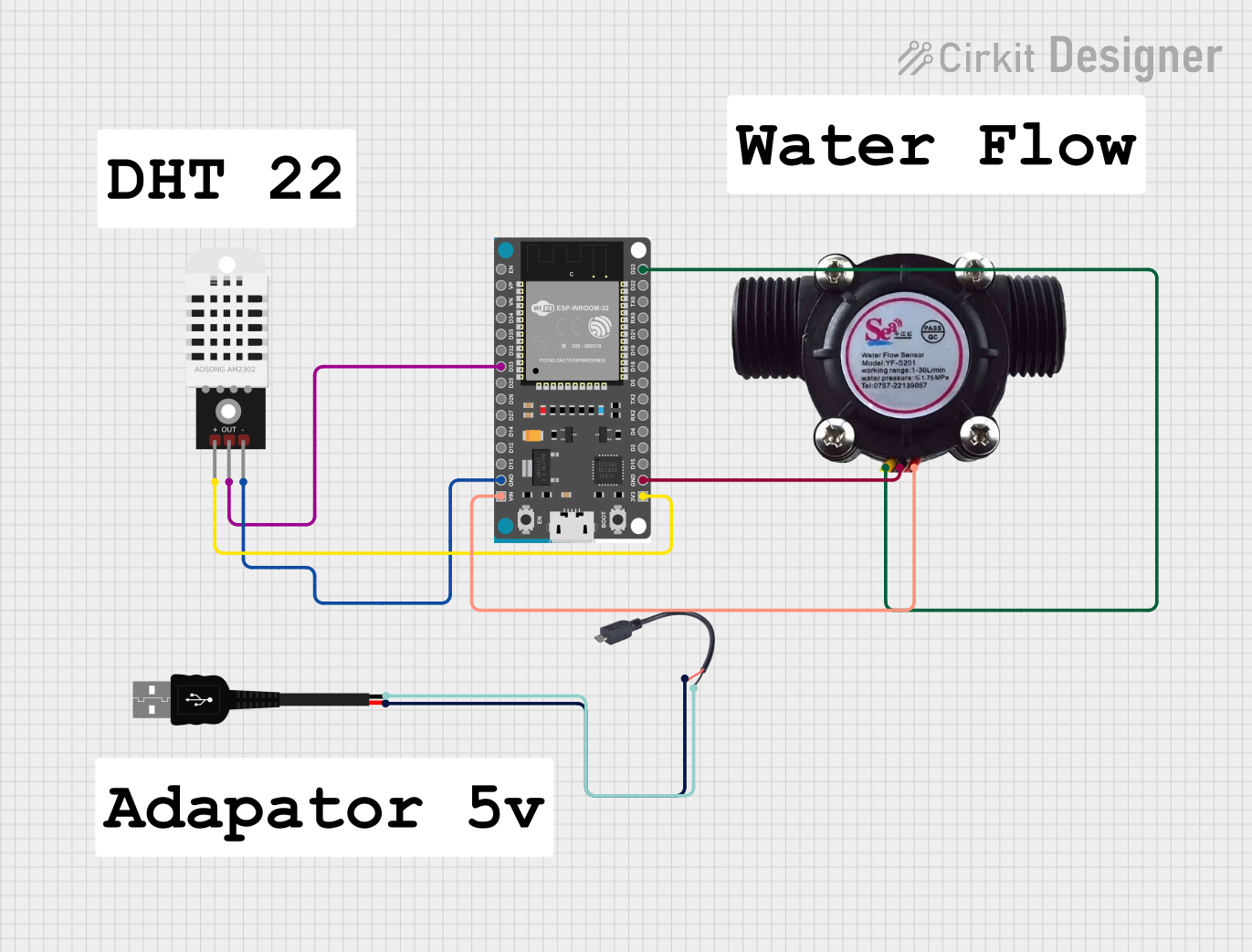
 Open Project in Cirkit Designer
Open Project in Cirkit Designer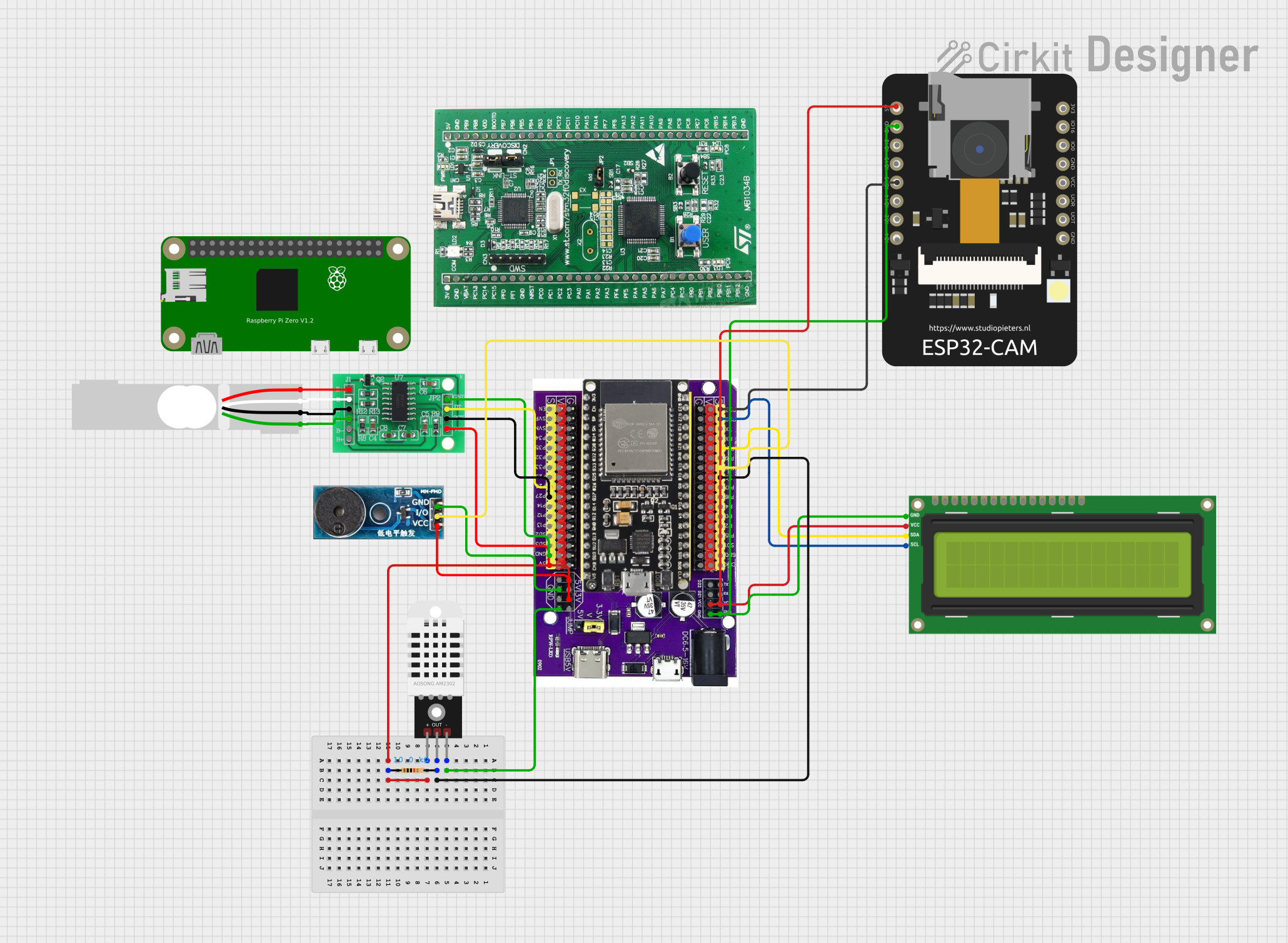
 Open Project in Cirkit Designer
Open Project in Cirkit DesignerExplore Projects Built with ESP32

 Open Project in Cirkit Designer
Open Project in Cirkit Designer
 Open Project in Cirkit Designer
Open Project in Cirkit Designer
 Open Project in Cirkit Designer
Open Project in Cirkit Designer
 Open Project in Cirkit Designer
Open Project in Cirkit DesignerCommon Applications and Use Cases
- IoT Devices: Smart home automation, environmental monitoring, and connected appliances.
- Wearables: Fitness trackers, health monitoring devices, and smartwatches.
- Industrial Automation: Wireless sensor networks, machine monitoring, and control systems.
- Prototyping and Development: Ideal for hobbyists and engineers building connected projects.
Technical Specifications
The ESP32 is a feature-rich microcontroller with the following key specifications:
Key Technical Details
- Processor: Dual-core Xtensa® 32-bit LX6 microprocessor, up to 240 MHz
- Memory: 520 KB SRAM, 4 MB Flash (varies by model)
- Wireless Connectivity:
- Wi-Fi: 802.11 b/g/n
- Bluetooth: v4.2 BR/EDR and BLE
- Operating Voltage: 3.3V
- GPIO Pins: 34 (multipurpose, including ADC, DAC, PWM, I2C, SPI, UART)
- ADC Channels: 18 (12-bit resolution)
- DAC Channels: 2 (8-bit resolution)
- Power Consumption: Ultra-low power consumption in deep sleep mode (~10 µA)
- Operating Temperature: -40°C to 125°C
Pin Configuration and Descriptions
The ESP32 NODEMCU board has a variety of pins for different functionalities. Below is a summary of the pin configuration:
| Pin Name | Function | Description |
|---|---|---|
| VIN | Power Input | Input voltage (5V) for powering the board. |
| 3V3 | Power Output | Regulated 3.3V output for external components. |
| GND | Ground | Common ground for the circuit. |
| EN | Enable | Enables or disables the chip. Active high. |
| GPIO0-GPIO39 | General Purpose I/O | Configurable as digital I/O, ADC, DAC, PWM, I2C, SPI, or UART. |
| ADC1/ADC2 | Analog Input | 12-bit ADC channels for analog signal input. |
| DAC1/DAC2 | Digital-to-Analog Converter | 8-bit DAC channels for generating analog signals. |
| TXD0/RXD0 | UART Communication | Default UART TX and RX pins for serial communication. |
| SCL/SDA | I2C Communication | Clock (SCL) and Data (SDA) pins for I2C communication. |
| MOSI/MISO | SPI Communication | Master Out Slave In (MOSI) and Master In Slave Out (MISO) for SPI communication. |
| RST | Reset | Resets the microcontroller. |
Usage Instructions
How to Use the ESP32 in a Circuit
- Powering the ESP32:
- Connect the VIN pin to a 5V power source or use the micro-USB port for power and programming.
- Ensure the GND pin is connected to the ground of your circuit.
- Programming the ESP32:
- Use the Arduino IDE or ESP-IDF (Espressif IoT Development Framework) for programming.
- Install the ESP32 board package in the Arduino IDE via the Board Manager.
- Connecting Peripherals:
- Use GPIO pins for digital I/O, ADC pins for analog input, and DAC pins for analog output.
- For communication, connect I2C, SPI, or UART peripherals to the respective pins.
Important Considerations and Best Practices
- Voltage Levels: The ESP32 operates at 3.3V logic levels. Avoid connecting 5V signals directly to GPIO pins.
- Power Supply: Use a stable power source to avoid unexpected resets or malfunctions.
- Deep Sleep Mode: Utilize deep sleep mode for battery-powered applications to minimize power consumption.
- Pull-up Resistors: Some GPIO pins require external pull-up resistors for proper operation (e.g., I2C lines).
Example Code for Arduino UNO Integration
Below is an example of using the ESP32 with the Arduino IDE to blink an LED connected to GPIO2:
// Example: Blink an LED connected to GPIO2 on the ESP32
#define LED_PIN 2 // GPIO2 is commonly used for onboard LEDs
void setup() {
pinMode(LED_PIN, OUTPUT); // Set GPIO2 as an output pin
}
void loop() {
digitalWrite(LED_PIN, HIGH); // Turn the LED on
delay(1000); // Wait for 1 second
digitalWrite(LED_PIN, LOW); // Turn the LED off
delay(1000); // Wait for 1 second
}
Troubleshooting and FAQs
Common Issues and Solutions
- ESP32 Not Detected by Computer:
- Ensure the correct USB driver is installed (e.g., CP210x or CH340 driver).
- Check the USB cable for data transfer capability (some cables are power-only).
- Upload Fails in Arduino IDE:
- Verify the correct board and port are selected in the Arduino IDE.
- Press and hold the "BOOT" button on the ESP32 while uploading the code.
- Wi-Fi Connection Issues:
- Double-check the SSID and password in your code.
- Ensure the Wi-Fi network is within range and not using unsupported security protocols.
- Random Resets or Instability:
- Use a stable power supply with sufficient current (at least 500 mA).
- Avoid using GPIO pins that are reserved for internal functions (e.g., GPIO6-GPIO11).
FAQs
Q: Can the ESP32 be powered with 5V?
A: Yes, the VIN pin or micro-USB port can accept 5V, but the logic level for GPIO pins is 3.3V.Q: How do I use Bluetooth on the ESP32?
A: Use the Arduino IDE or ESP-IDF to program Bluetooth functionality. The ESP32 supports both Bluetooth Classic and BLE.Q: Can I use the ESP32 with a battery?
A: Yes, the ESP32 can be powered by a LiPo battery through the VIN pin or a dedicated battery management circuit.Q: What is the maximum range of the ESP32's Wi-Fi?
A: The range depends on environmental factors but typically extends up to 100 meters in open space.
This documentation provides a comprehensive guide to using the ESP32 NODEMCU for your projects. For further assistance, refer to the official datasheet or community forums.